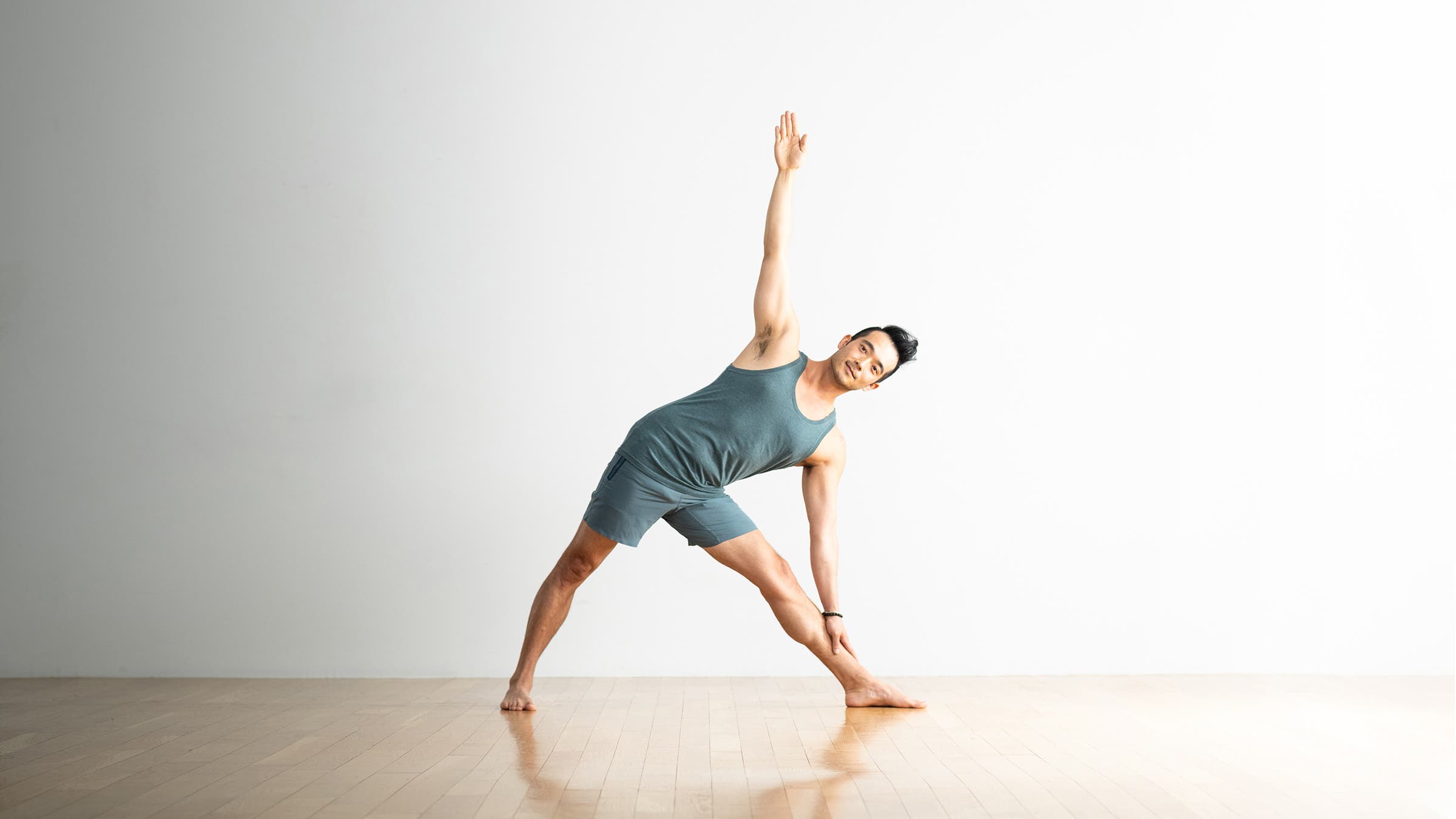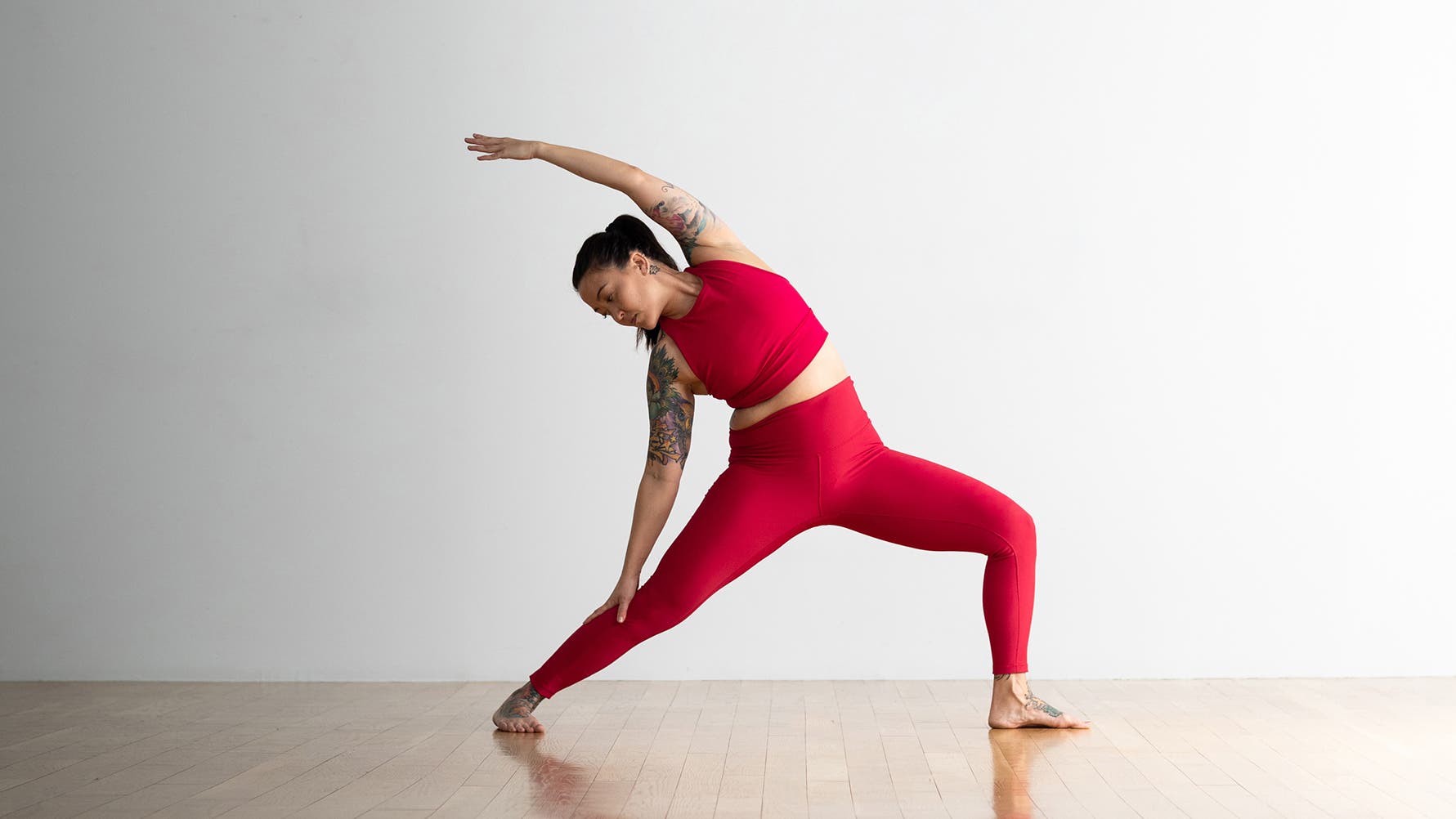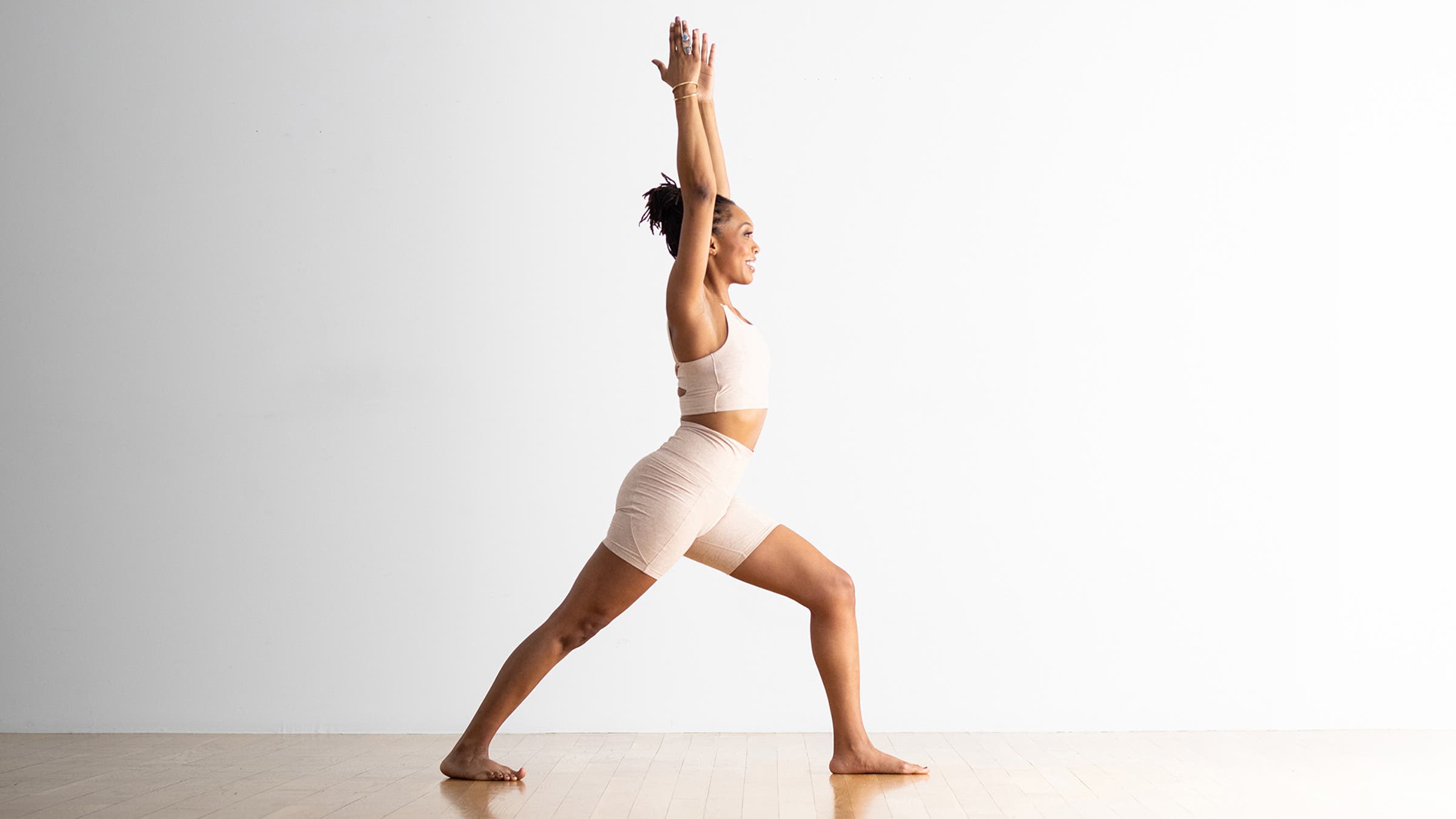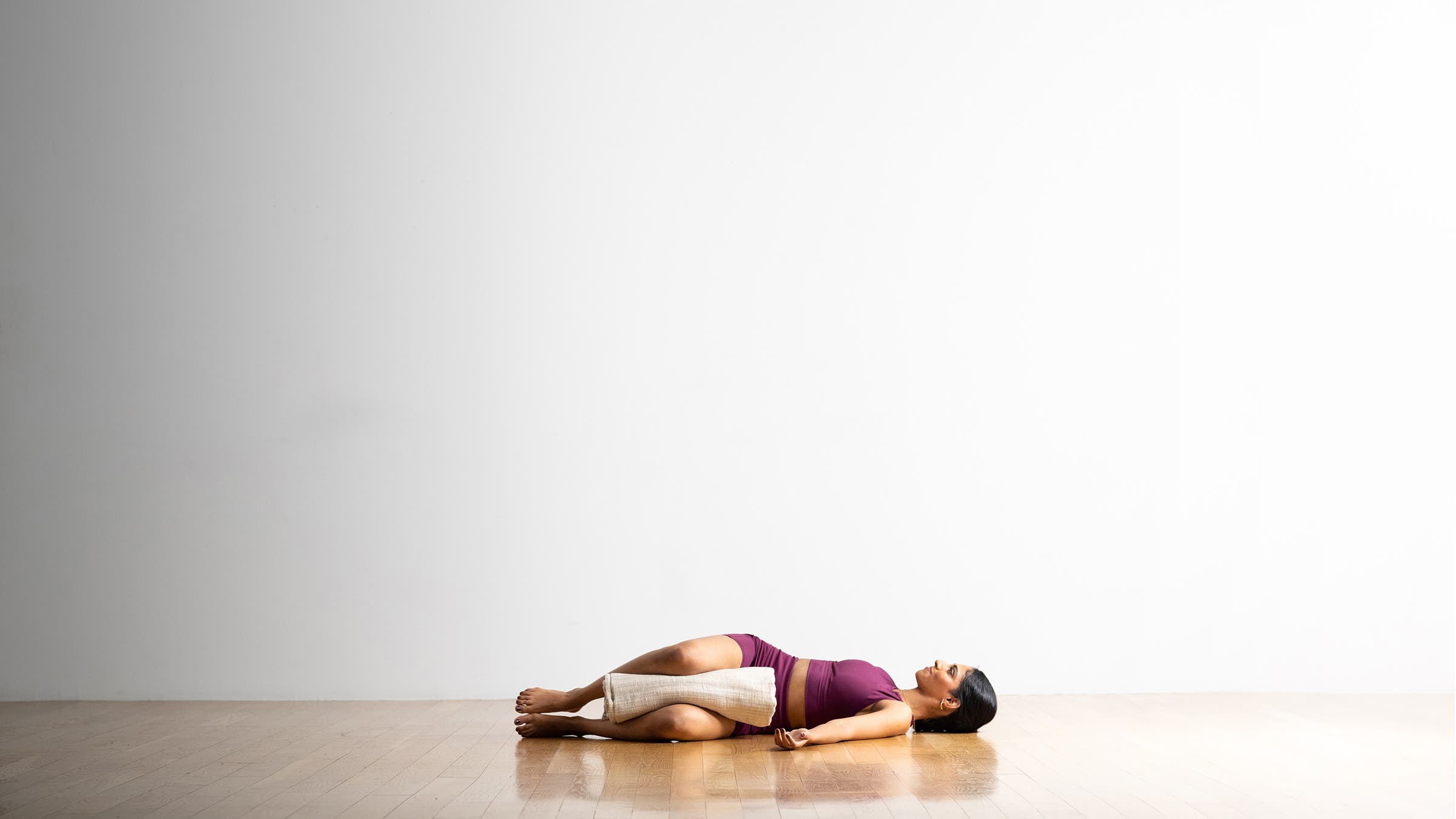This Is the One Cue That I Often Ignore in Yoga

(Photo: Andrew Clark; Clothing: Calia)
In yoga and in life, we’re taught to follow the instructions of the teacher. You simply do what you’re told.
But I am of the school of thought that you should practice what feels good in your body. So when I practice and teach yoga, there are times when I ignore what I was taught.
The one yoga cue that I often ignore
My rebellion most often comes up when it comes to where I fix my drishti, or gaze. In many poses, the way I am told to turn my gaze just doesn’t feel good.
When I practice Viparita Virabhadrasana (Reverse Warrior), it feels better to gaze down at my back foot rather than to strain my neck as I look toward the ceiling. When I’m balancing in Ardha Chandrasana (Half Moon Pose), looking toward my top hand can feel incredibly uncomfortable. In twists, whether standing or seated, I often keep my gaze straight ahead rather than forcing myself to gaze over my shoulder. And in Eka Pada Koundinyasana (Hurdler’s Pose), rather than looking slightly forward and bringing my neck into unnatural flexion, I turn my gaze toward my front foot.
No, these aren’t the commonly cued ways to fix my drishti, or gaze—and this approach may not feel right for everyone. But these changes work best for my body.
Why I feel confident going against what I was taught
Yoga is not one size fits all. Some cues that are intended for the greatest common denominator in a group setting work can cause unnecessary strain for many of us. It all comes down to our unique musculoskeletal anatomy. Sometimes the distinction is genetic, sometimes it’s from an injury, sometimes it’s from (gracefully) aging. Whatever the reason, we need to adjust and accommodate what our bodies are telling us.
Anatomical instructions that we hear in yoga classes may be perfectly correct, but they do not need to be taken as “the only way.” What’s the harm in listening to our bodies and breaking the old-school way of cueing and doing things? When I teach, I often provide the traditional cue to students and supplement it with alternate options. I don’t want my students to feel pressured to maintain the traditional alignment, and many of us simply don’t know the next best alternative, no matter how intuitive it may feel.
If you have cervical muscle strain, pinched nerves, herniations, bone spurs, osteoporosis, any other situation that hinders neck rotation—or if turning your head a certain way simply doesn’t feel good—then listen to your needs. This doesn’t mean you won’t be able to take the traditional neck position at some point. In my own practice, I usually decide my approach to the gaze day by day. Remember, part of yoga is listening to how you feel and knowing what is best for you in the moment versus in the past or future.
How to prevent neck strain in common yoga poses
Cervical spine relief may be just a gaze in a different direction away. The following cues illustrate some of the common ways you are asked to move your neck in various postures. For each, I offer alternatives. But don’t just listen to me! Always practice in a way that honors your needs, regardless of whether you are taking a variation of a pose or its “full expression.”

TRADITIONAL CUE Turn your gaze to your top hand
ALTERNATIVE CUE Keep your chin in line with your chest
Many poses traditionally ask you to turn your head and lift your gaze to your raised hand. However, if that much cervical rotation is uncomfortable, you can keep your chin in line with your chest and your gaze straight ahead. This allows you to lengthen equally through all sides of your neck.
Try this variation in:
Utthita Trikonasana (Extended Triangle Pose)
Utthita Parsvakonasana (Extended Side Angle Pose)
Ardha Chandrasana (Half Moon Pose)
Parivrtta Ardha Chandrasana (Revolved Half Moon Pose)

TRADITIONAL CUE Turn your gaze to your top hand
ALTERNATIVE CUE Lower your gaze to your back foot
In poses in which you are asked to turn your gaze toward the ceiling while your body is angled, you can lower your gaze toward the mat or your back foot instead. This typically requires less strain and flexion of your neck.
You may encounter this in:
Viparita Virabhadrasana (Reverse Warrior Pose)
Viparita Trikonasana (Reverse Triangle Pose)

TRADITIONAL CUE Look upward
ALTERNATIVE CUE Look straight ahead
Often in Virabhadrasana 1 (Warrior 1), you’ll be cued to look up at your hands. When you do this, your chin is lifted and your head is tilted slightly back, which brings your neck into slight flexion. (Flexion of the spine, which includes the neck, is when you bend backward in space.) Even a little neck flexion can be uncomfortable for some of us. Also, there’s the temptation to throw your head back more than a safe amount, which not only creates cervical issues but can also throw off the rest of your alignment.
Something similar happens in Eka Pada Koundinyasana (Hurdler’s Pose), in which you are commonly cued to “gaze forward.” This essentially asks you to look upward since your face is so close to the ground, a position that brings your neck into a similar flexion as looking at your hands in Warrior I. The problem, in addition to any discomfort, is that there is often a tendency to shift your weight further forward to counterbalance in Koundinyasana. If your gaze is already forward, your face may start to feel uncomfortably close to the ground. If you experience anxiety as a result, the tension can throw off your concentration as well as your balance.
In Koundinyasana, when you turn your gaze toward your extended leg, the back of your neck can elongate, which can relieve discomfort. Since you won’t be so preoccupied with not kissing the ground, you can admire your steadiness during a challenging pose.
You’ll experience this in:
Virabhadrasana 1 (Warrior 1)
Eka Pada Koundinyasana (Hurdler’s Pose)

TRADITIONAL CUE Turn your gaze over your opposite shoulder
ALTERNATIVE CUE Gaze straight ahead
Sometimes twisting to look opposite your legs can place unnecessary strain on your neck and shoulders. You can always take the option to turn your head only to the extent that is comfortable for you, or keep your gaze straight ahead, which means keeping your chin in line with your chest.
This applies to several common twists:
Parivrtta Janu Sirsasana (Revolved Head-t0-Knee Pose)
Ardha Matysendrasana (Half Lord of the Fishes Pose)
Marichyasana 3 (Pose Dedicated to the Sage Marichi)
Reclining Twist
About our contributor
Jenny Clise has been teaching yoga since 2012. Her classes are inspired by many schools of yoga, but her favorite style of yoga to teach is alignment-based flows. She is an avid traveler, leading retreats around the world, and author of the yoga e-book BLOCKASANAS. To learn more about Jenny, her classes, or upcoming events, check out her website JennyClise.com or Instagram @jennyclise_.